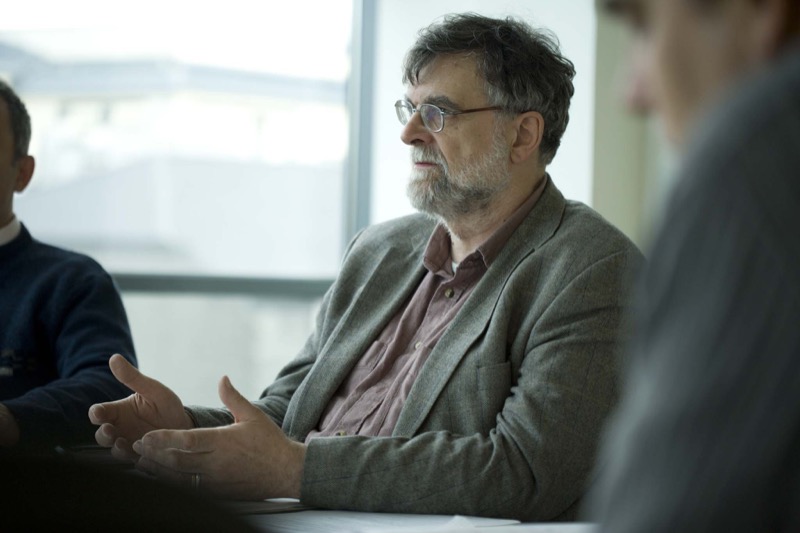Researchers Discover World-First New Material which could Revolutionise IT
Posted on: 03 July 2014
Scientists at AMBER, the materials science centre based at Trinity College Dublin have discovered a completely new material, which could revolutionise information technology, computer processes and data storage. The world-first discovery was led by one of Ireland’s most highly-cited researchers Professor Michael Coey, a Principal Investigator at AMBER from Trinity’s School of Physics. The Centre is funded by the Department of Jobs, Enterprise and Innovation through Science Foundation Ireland.
The research group led by Professor Coey has created a completely new alloy of manganese, ruthenium and gallium, known as MRG. MRG is a strange new magnet; internally it is as magnetic as the strongest magnets available today, yet seen from the outside it barely appears magnetic at all. This world-first material (technically known as a “zero-moment half metal”) will initiate a completely new line of materials research and could open up numerous possibilities for electronics and information technology.
The potential applications of MRG are many. It could lead to limitless data storage, resulting in huge, superfast memory in personal computer devices. It could also eliminate the potential of external magnetic forces to ‘wipe’ computer data. Finally, MRG could have major implications for the Big Data revolution.
Commenting on the discovery, Professor Coey said: “Magnetic materials are what make reading and storing data, either on personal devices or on large scale servers in data centres, possible. Magnets are at the heart of every electronic device we use – from computers and laptops to tablets, smartphones and digital cameras. Given its unique insensitivity to magnetic fields, and the tenacity of its internal magnetic properties, MRG could now revolutionise how data is stored, which could have major implications for the future development of electronics, information technology and a host of other applications.”

For 25 years, researchers worldwide have grappled with how to create a magnet such as MRG by trying to arrange numerous combinations of atoms in a way which was difficult without flouting the basic principles of physics. Now, AMBER researchers have solved this problem, by using established industry-standard processes for making the electronic circuits on silicon chips. MRG could therefore be adopted by computer and electronics companies relatively easily.
Minister for Research and Innovation Seán Sherlock TD welcomed the announcement and said: “Here is a Government-funded research centre discovering innovative solutions to problems faced by the technology industry. I would like to praise the work of Professor Coey and his team on this world first which opens up a range of potential applications in the electronics and information technology sectors.”
Professor Mark Ferguson, Director General of SFI and Chief Scientific Adviser to the Government of Ireland said: “SFI Research Centres like AMBER, were established with a focus on delivering cutting edge, internationally excellent research, which will deliver real benefit to the economy and to industry. This discovery absolutely fits the bill and I congratulate Professor Coey and his team. Their discovery is a world first which could solve one of the major problems faced by the technology industry worldwide. This is the type of research which Ireland is, and will continue to be recognised for.”
